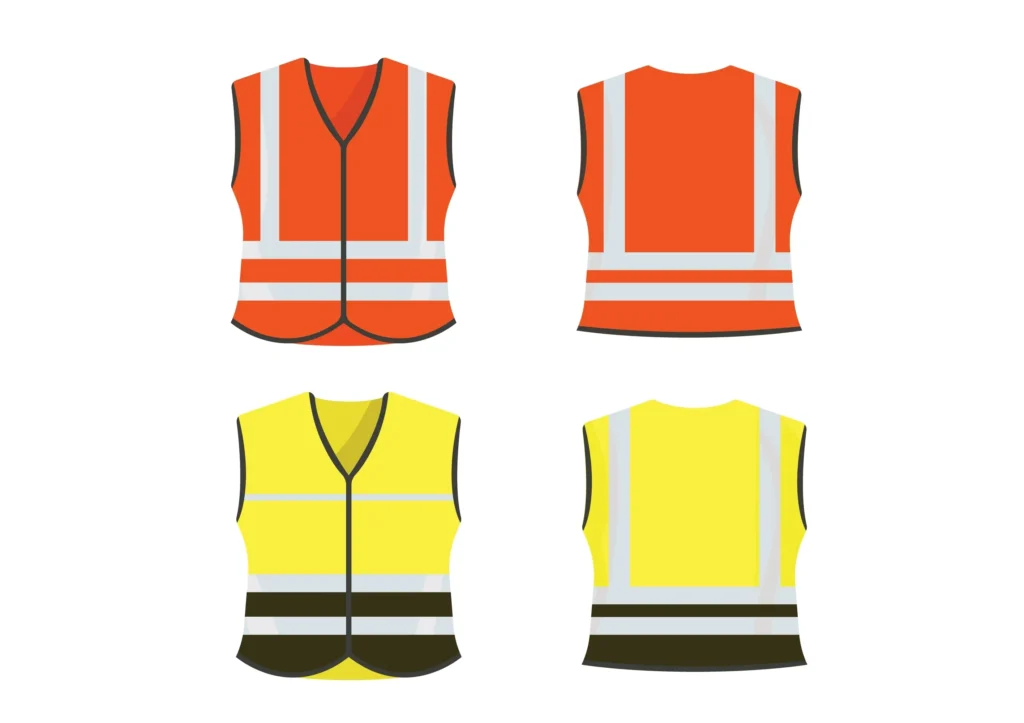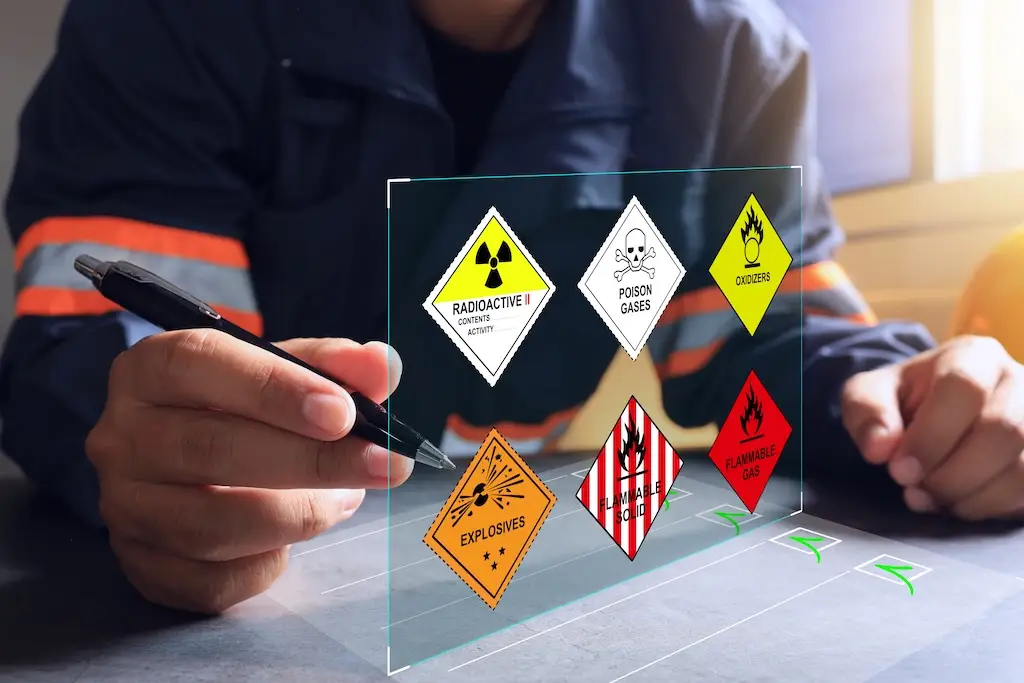
Discover actionable strategies for improving warehouse safety with 12 essential tips, from identifying hazards to fostering a safety-first culture.
How can you ensure your warehouse remains a safe environment while navigating the complexities of heavy machinery, hazardous materials, and bustling operations? Warehouse safety is more than just a compliance requirement—it’s a commitment to protecting your team, reducing downtime, and fostering a productive work environment.
From preventing costly injuries to saving lives, implementing effective safety measures can make all the difference. Whether you’re addressing immediate safety concerns or striving for long-term operational excellence, these 12 tips provide practical strategies to make your warehouse a safer, more efficient environment. This guide will walk you through actionable steps to help you create a secure and productive warehouse for everyone involved.
Key Takeaways
- Understand the most common warehouse hazards, such as machinery-related injuries, slip-and-trip risks, and improper handling of hazardous materials.
- Learn actionable steps to improve safety, including training employees, enforcing safety protocols, and conducting regular audits.
- Discover how cultivating a safety-first culture benefits both your workforce and overall operations.
Importance of Warehouse Safety: More Than Compliance
Warehouse safety is not just about meeting regulations—it’s about protecting lives, ensuring operational efficiency, and building a culture of care. The numbers are sobering: the warehouse industry has a fatality rate higher than the average across all industries, with workplace fatalities doubling since 2019.
Beyond these human costs, neglecting safety protocols can lead to significant financial and legal repercussions, including fines, lawsuits, and downtime. Preventable injuries, such as chemical burns or long-term illnesses from exposure to hazardous materials, highlight the far-reaching consequences of ignoring safety.
Safety is more than a checklist—it’s the foundation of a successful operation. By prioritizing safety, you protect not only your employees but also the long-term stability of your business.
With this understanding in place, let’s explore 12 actionable strategies to turn these principles into practice and ensure a safer, more productive warehouse for everyone.
1. Conduct Regular Hazard Assessments
A safe warehouse begins with proactive hazard identification. Warehouses are dynamic environments with potential risks around every corner—from heavy equipment accidents to fire hazards. Regular assessments help ensure that risks are addressed before they result in incidents.
Steps to Minimize Hazards
- Thorough Risk Assessments: Regularly inspect your facility to identify and address potential hazards.
- Highlight Critical Safety Zones: Use clear signage and floor markings to designate pedestrian walkways, vehicle lanes, and emergency exits.
- Engage Employees in Reporting Hazards: Encourage workers to identify and report potential risks to foster a culture of shared responsibility.
By understanding and addressing hazards early, you can create a safer, more productive environment for everyone.

2. Follow Safety Protocols for Heavy Equipment
In warehouses, heavy equipment like forklifts and conveyor systems are indispensable for daily operations. However, their use comes with inherent dangers. Forklift accidents are a significant concern, with approximately 85 fatalities and 34,900 serious injuries reported annually, according to OSHA. Overturning forklifts, which account for 25% of all forklift-related accidents, remain the leading cause of fatalities. These figures emphasize the importance of implementing robust safety measures to minimize risks.
How to Mitigate Machinery Risks
- Strict Training Requirements: Only certified operators should handle forklifts or similar equipment. Regular training refreshers ensure adherence to safety protocols.
- Routine Maintenance: Schedule frequent inspections and maintenance to keep equipment in top condition and reduce the likelihood of mechanical failures.
- Zero-Tolerance Policies: Enforce rules against reckless driving or misuse of equipment to establish clear expectations for safe operations.
By prioritizing training, maintenance, and clear policies, warehouses can significantly reduce machinery-related incidents and create a safer, more productive work environment.
3. Prevent Slip and Trip Hazards
Slips, trips, and falls are among the most common warehouse safety hazards. Spilled liquids, stray cords, and cluttered pathways are just a few culprits that can turn a productive day into an emergency situation. These hazards not only endanger workers but also disrupt operations and increase liability risks.
Preventing Slips and Trips
- Keep Pathways Clear: Ensure aisles and walkways remain free of debris, cords, and improperly stored items.
- Regular Floor Maintenance: Address slippery or uneven surfaces through routine cleaning and repair schedules.
- Use Visual Warnings: Place clear signage around wet floors, damaged areas, or temporary obstacles.
A proactive approach to maintaining clean and organized floors can dramatically reduce the risk of slips and trips, making your warehouse safer and more efficient.
4. Provide and Enforce Personal Protective Equipment (PPE) Usage
Personal protective equipment (PPE) shields workers from a wide range of warehouse hazards, making it a non-negotiable component of any safety plan.
Key PPE for Warehouse Workers
- Safety Glasses and Goggles: Protect against flying debris and chemical splashes.
- Hard Hats: Reduce the risk of head injuries from falling objects.
- Steel-Toe Boots: Prevent foot injuries from heavy equipment and dropped items.
- Gloves: Shield hands from cuts, abrasions, and hazardous chemicals.
- High-Visibility Vests: Ensure workers are easily seen in busy environments.
Equipping employees with the right PPE for their tasks is a simple but highly effective way to prevent workplace injuries.

5. Implement Safe Hazardous Materials Handling Practices
For warehouses dealing with chemicals or other hazardous materials, proper handling protocols are non-negotiable. Chemical spills and improper storage not only pose health risks but can also lead to fire hazards or environmental damage.
Best Practices for Handling Hazardous Materials
- Implement Clear Protocols: Design and enforce safety procedures for storing, transporting, and disposing of hazardous materials.
- Provide Specialized Training: Train employees on identifying hazards, using appropriate tools, and responding to emergencies involving chemical spills.
- Equip with Safety Gear: Ensure workers handling hazardous materials are equipped with personal protective equipment (PPE) like gloves, goggles, and chemical-resistant clothing.
A well-trained workforce and clear protocols can minimize risks and create a safer environment for handling hazardous materials.
6. Establish Tailored Safety Procedures
Implementing tailored safety procedures is crucial for minimizing risks and creating a secure workplace. Warehouses differ in layout, equipment, and operations, meaning a one-size-fits-all approach to safety won’t work. Instead, identify specific hazards within your facility and address them with customized protocols.
Steps to Develop Effective Safety Procedures
- Evaluate Workplace Activities: Identify high-risk tasks, such as working at heights or handling hazardous materials, and design targeted protocols to reduce risks.
- Train Workers Thoroughly: Offer comprehensive onboarding and ongoing training to ensure employees understand and follow safety guidelines.
- Reinforce Accountability: Establish clear roles and responsibilities for safety enforcement at every level of the organization.
Safety procedures are most effective when paired with consistent enforcement and employee participation, ensuring a safe and productive environment.
7. Encourage Proper Ergonomics and Lifting Techniques
Musculoskeletal injuries, such as sprains, strains, and back pain, are common in warehouses due to improper lifting techniques or poor ergonomics. Heavy or awkward loads can lead to costly injuries, affecting both worker well-being and operational efficiency.
How to Improve Ergonomics and Lifting Safety
- Provide Training: Teach employees proper lifting techniques, such as bending at the knees and keeping loads close to the body.
- Use Tools to Assist: Equip the warehouse with dollies, forklifts, and lifting belts to reduce strain on workers.
- Organize Workstations: Ensure that items frequently handled are stored at waist height to minimize repetitive bending or reaching.
Focusing on ergonomics and safe lifting practices not only reduces injuries but also increases worker comfort and productivity.
8. Install and Maintain Fire Safety Systems
Fire safety is a critical yet often overlooked aspect of warehouse safety. Fires can cause severe damage to inventory, equipment, and lives, making proactive prevention essential.
Best Practices for Fire Safety
- Install and Maintain Fire Suppression Systems: Equip your warehouse with sprinklers, fire extinguishers, and smoke detectors, and ensure they’re regularly inspected.
- Ensure Clear Emergency Exits: Keep all exits unobstructed and labeled with illuminated signs to facilitate quick evacuations.
- Train Employees on Fire Response: Conduct regular fire drills to familiarize staff with evacuation routes and emergency protocols.
Implementing these measures minimizes fire-related risks and ensures the safety of both employees and assets.
9. Develop Comprehensive Emergency Response Plans
No warehouse is immune to emergencies, but preparedness can significantly reduce their impact. Whether facing fires, chemical spills, or natural disasters, a well-crafted emergency response plan is essential.
Creating an Effective Emergency Response Plan
- Define Clear Protocols: Establish step-by-step procedures for handling specific emergencies, from fire evacuations to chemical containment.
- Map Exit Routes: Ensure all employees know the safest and quickest exit routes in case of an emergency.
- Conduct Regular Drills: Practice emergency plans at least twice a year to reinforce procedures and identify areas for improvement.
When emergencies arise, preparation can make the difference between chaos and an organized response. Additionally, effective emergency planning not only saves lives but also minimizes downtime and protects valuable assets in critical moments.

10. Prioritize Ongoing Training and Education
Comprehensive training equips employees with the knowledge and skills to identify hazards, respond to emergencies, and operate equipment safely. A strong emphasis on education creates a workforce that values safety.
Components of Effective Safety Training
- Onboarding Programs: Introduce new hires to warehouse safety protocols and expectations.
- Frequent Refreshers: Keep safety top of mind with regular training sessions on hazard awareness and emergency response.
- First Aid Training: Empower workers to provide immediate assistance during emergencies, potentially saving lives.
Investing in continuous education not only reduces risks but also boosts employee confidence and morale.
11. Conduct Regular Safety Audits
Safety audits are essential for identifying potential hazards and ensuring compliance with regulations. Regular audits create accountability and provide opportunities to address weaknesses before they lead to accidents.
Steps for a Successful Safety Audit
- Inspect Key Areas: Focus on high-risk zones such as equipment storage, loading docks, and hazardous material areas.
- Involve an External Expert: Gain an unbiased perspective by hiring a third-party auditor to review your processes.
- Leverage Technology: Use tools like warehouse management systems (WMS), such as LogimaxWMS, to streamline the tracking of identified hazards and monitor corrective actions.
Proactive auditing helps warehouses maintain high safety standards and fosters a culture of continuous improvement. With the support of an efficient WMS, you can easily document safety measures and ensure all actions are followed through.
12. Foster a Safety-First Culture
A true culture of safety goes beyond protocols—it involves engaging employees, setting an example through leadership, and rewarding safe behaviors.
How to Foster a Safety-First Culture
- Lead by Example: Management should prioritize safety in their actions and decisions, demonstrating its importance to the entire team.
- Encourage Employee Involvement: Form safety committees, and solicit feedback from workers on potential risks and improvements.
- Recognize Safe Behaviors: Reward individuals or teams for adhering to safety standards or reporting hazards.
When safety becomes part of the company’s DNA, it leads to fewer incidents and a more engaged workforce.
Summary: Creating a Safer Warehouse for Everyone
Warehouse safety isn’t just a box to check—it’s a commitment to protecting lives, improving productivity, and ensuring the long-term success of your operations. By identifying hazards, enforcing robust safety protocols, and fostering a culture of safety, you can create a warehouse environment where everyone thrives.
Remember, safety is a shared responsibility. Implement these tips, and you’ll not only reduce risks but also build a safer, more efficient operation.
Looking to optimize your warehouse operations further? Discover how LogimaxWMS can help streamline workflows, support safety initiatives, and improve operational efficiency. Contact us today to learn more about our solutions tailored to warehouse management.
Frequently Asked Questions
What are the most common warehouse safety hazards?
The most common warehouse safety hazards include:
- Heavy Equipment Risks: Forklift accidents, improper machinery operation, and lack of maintenance.
- Slip-and-Trip Hazards: Spilled liquids, uneven surfaces, and cluttered pathways.
- Hazardous Materials: Chemical spills, improper storage, and handling errors.
By addressing these hazards proactively, you can significantly reduce accidents and create a safer environment.
Why is ongoing safety training important in warehouses?
Ongoing safety training ensures workers remain informed about:
- New or updated safety protocols.
- Proper handling of equipment and hazardous materials.
- Emergency response procedures.
Regular training not only reduces accidents but also fosters a culture of safety awareness and compliance.
What personal protective equipment (PPE) is necessary for warehouse workers?
Essential PPE for warehouse workers includes:
- Safety Glasses or Goggles: For protection against flying debris.
- Hard Hats: To prevent head injuries from falling objects.
- Steel-Toe Boots: To guard against heavy items or equipment.
- High-Visibility Vests: For better visibility in busy environments.
- Gloves: To protect hands from cuts, abrasions, and chemicals.
Ensuring proper PPE use tailored to specific tasks can prevent many workplace injuries.
How can technology improve warehouse safety training?
Technology enhances warehouse safety training by:
- eLearning Platforms: Providing flexible, accessible training programs.
- 3D Animations and Simulations: Offering visual, interactive lessons on safety protocols.
- Tracking Progress: Using software to monitor employee training completion and understanding.
These tools make training more engaging and effective while ensuring compliance.
How often should safety audits be conducted in warehouses?
Safety audits should be conducted at least annually, but for more complex warehouses, quarterly or biannual audits are recommended. Frequent audits:
- Identify emerging risks.
- Ensure ongoing compliance with safety standards.
- Promote continuous improvement in safety practices.
Regular audits help maintain a safe, efficient warehouse environment. A proactive commitment to safety can also improve employee morale and enhance relationships with clients and regulators.



